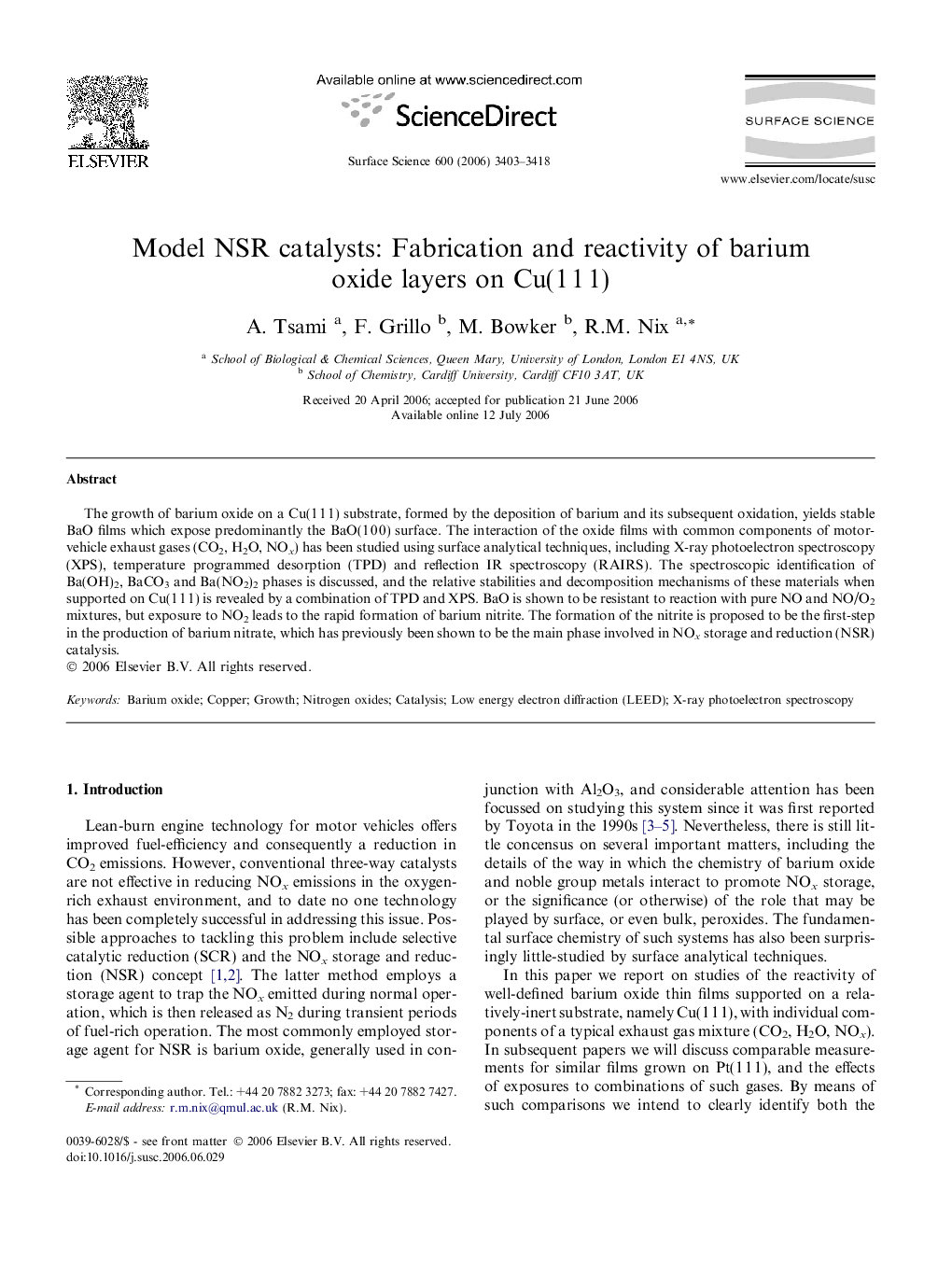| Article ID | Journal | Published Year | Pages | File Type |
|---|---|---|---|---|
| 5426591 | Surface Science | 2006 | 16 Pages |
The growth of barium oxide on a Cu(1Â 1Â 1) substrate, formed by the deposition of barium and its subsequent oxidation, yields stable BaO films which expose predominantly the BaO(1Â 0Â 0) surface. The interaction of the oxide films with common components of motor-vehicle exhaust gases (CO2, H2O, NOx) has been studied using surface analytical techniques, including X-ray photoelectron spectroscopy (XPS), temperature programmed desorption (TPD) and reflection IR spectroscopy (RAIRS). The spectroscopic identification of Ba(OH)2, BaCO3 and Ba(NO2)2 phases is discussed, and the relative stabilities and decomposition mechanisms of these materials when supported on Cu(1Â 1Â 1) is revealed by a combination of TPD and XPS. BaO is shown to be resistant to reaction with pure NO and NO/O2 mixtures, but exposure to NO2 leads to the rapid formation of barium nitrite. The formation of the nitrite is proposed to be the first-step in the production of barium nitrate, which has previously been shown to be the main phase involved in NOx storage and reduction (NSR) catalysis.
